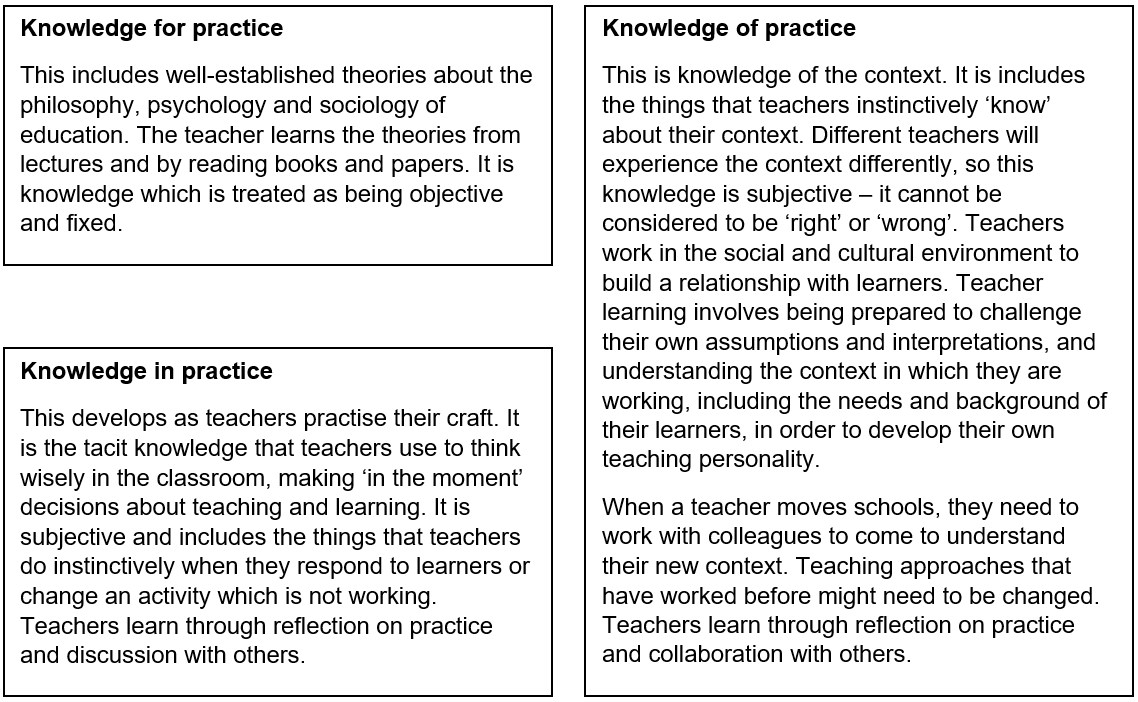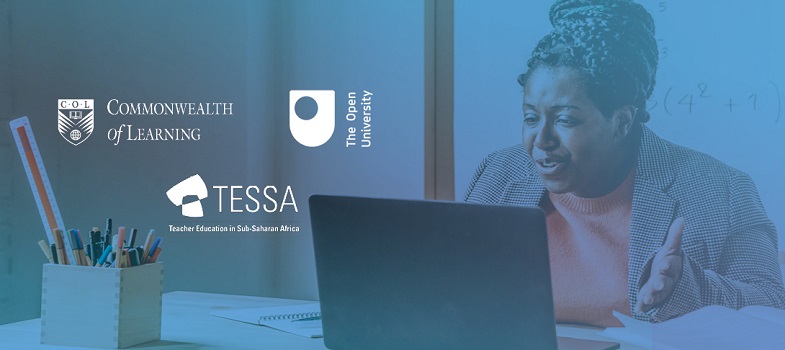Week 4: A toolkit for inclusive teaching and learning
1. Introduction
1.2. Knowledge for teaching
Learning to be a teacher is a complicated process – yet it is often presented as being straightforward – simply a matter of following a set of rules (knowledge of which is tested by exam) or following a prescribed lesson plan. In order to understand how to become a better inclusive teacher, it is helpful to think about what it is teachers need to know and be able to do.
One way to think about this issue is to consider knowledge about teaching as falling into three categories:
- Knowledge for practice
- Knowledge of practice
- Knowledge in practice

Figure 1 The three categories of teaching ‘knowledge’ (drawn from Cohran-Smith and Lytle, 1999). View PDF version
Activity 4.1 Knowledge for teachingAllow approximately 30 minutes for this activity.
|
